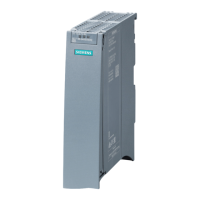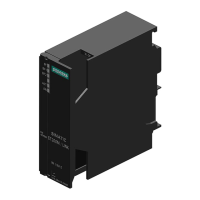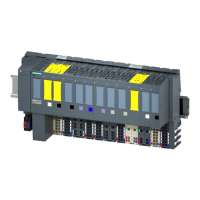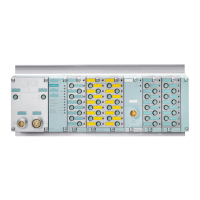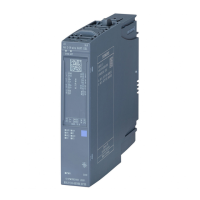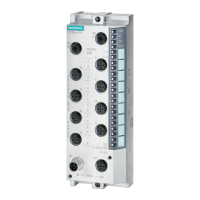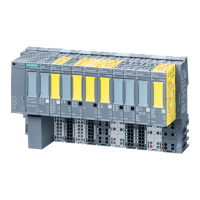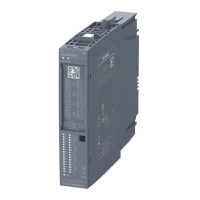Wiring
7.10 Front connector for the I/O modules
Automation system
System Manual, 01/2023, A5E03461182-AK
175
Properties of the front connectors
The three different front connectors are characterized as follows:
• 40 clamping points each
• Connection system: Screw terminal (for 35 mm modules only) or push-in terminal
• Module width: 35 mm or 25 mm
• If you want to supply load groups with the same potential (non-isolated), use the potential
bridges supplied for the front connector (with 35 mm width) for digital I/O modules. The
bridges are used to connect the terminals 9 and 29, 10 and 30, 19 and 39 as well as 20
and 40 facing each other. Advantage: Reduction of the wiring effort.
The use of potential bridges depends on the relevant module used.
It is not permitted to use potential bridges for 230 V modules. Use the po
tential bridges
only with a maximum supply voltage of 24 V DC. The current capacity per potential bridge
is 8 A maximum.
Because of the different assignment, you may not use the potential bridges with analog
I/O modules.
The front connectors for 25
mm modules have no potential bridges.
Observe the instructions and wiring rules in the product manual of the respective I/O
module when using potential bridges.
• In the delivery state a coding element is located in the module. When the front connector
is first inserted into the I/O module, a part of the coding element clips onto the front
connector. When the front connector is removed from the I/O module, one part of the
coding element remains in the front connector, and the other part remains in the I/O
module. The insertion of a front connector that is not suited to the module is thereby
mechanically prevented. This ensures, for example, that the front connector with the
coding element for a digital module cannot be inserted into an analog module.
Properties of the front connectors on fail-safe modules
In as-delivered condition, a fail-safe module not only has a mechanical coding element but
also an electronic coding element. The electronic coding key is a rewritable memory for the
PROFIsafe address. When the front connector is inserted in the F-module, the electronic
coding element engages completely in the front connector. If you remove the front
connector from the F-module, the memory with the PROFIsafe address of the fail-safe module
remains in the front connector (see section Replacing a front connector (Page 307)).
Reference
You can find additional information on the coding element in the section Coding element on
the I/O module and on the front connector (Page 303).
Additional information on the use of the potential bridges can be found in the product
manual for the respective I/O module.
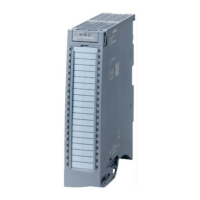
